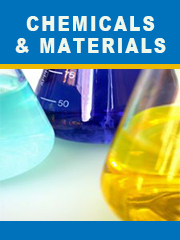Report overview
Halogen-free flame retardant is the mixture of polymer and base filler. Base filler is derived from metal hydroxides (aluminum and magnesium), phosphorus, nitrogen, zinc, and borates.
This report aims to provide a comprehensive presentation of the global market for Halogen-Free Flame Retardant Chemicals, with both quantitative and qualitative analysis, to help readers develop business/growth strategies, assess the market competitive situation, analyze their position in the current marketplace, and make informed business decisions regarding Halogen-Free Flame Retardant Chemicals. This report contains market size and forecasts of Halogen-Free Flame Retardant Chemicals in global, including the following market information:
Global Halogen-Free Flame Retardant Chemicals Market Revenue, 2018-2023, 2024-2029, ($ millions)
Global Halogen-Free Flame Retardant Chemicals Market Sales, 2018-2023, 2024-2029, (K MT)
Global top five Halogen-Free Flame Retardant Chemicals companies in 2022 (%)
The global Halogen-Free Flame Retardant Chemicals market was valued at US$ 4799 million in 2022 and is projected to reach US$ 7461.3 million by 2029, at a CAGR of 6.5% during the forecast period. The influence of COVID-19 and the Russia-Ukraine War were considered while estimating market sizes.
Global Halogen-Free Flame Retardant Chemicals key players include J.M. Huber Corporation, ICL, Clariant, Lanxess, etc. Global top four manufacturers hold a share about 20%.
China is the largest market, with a share over 40%, followed by Europe, and North America, both have a share about 35 percent.
In terms of product, Inorganic is the largest segment, with a share over 65%. And in terms of application, the largest application is Building and Construction, followed by Electronics and Appliances, Wire and Cable, Automotive, etc.
We surveyed the Halogen-Free Flame Retardant Chemicals manufacturers, suppliers, distributors and industry experts on this industry, involving the sales, revenue, demand, price change, product type, recent development and plan, industry trends, drivers, challenges, obstacles, and potential risks.
Total Market by Segment:
Global Halogen-Free Flame Retardant Chemicals Market, by Type, 2018-2023, 2024-2029 ($ Millions) & (K MT)
Global Halogen-Free Flame Retardant Chemicals Market Segment Percentages, by Type, 2022 (%)
Organic
Inorganic
Global Halogen-Free Flame Retardant Chemicals Market, by Application, 2018-2023, 2024-2029 ($ Millions) & (K MT)
Global Halogen-Free Flame Retardant Chemicals Market Segment Percentages, by Application, 2022 (%)
Building and Construction
Electronics and Appliances
Wire and Cable
Automotive
Others
Global Halogen-Free Flame Retardant Chemicals Market, By Region and Country, 2018-2023, 2024-2029 ($ Millions) & (K MT)
Global Halogen-Free Flame Retardant Chemicals Market Segment Percentages, By Region and Country, 2022 (%)
North America
US
Canada
Mexico
Europe
Germany
France
U.K.
Italy
Russia
Nordic Countries
Benelux
Rest of Europe
Asia
China
Japan
South Korea
Southeast Asia
India
Rest of Asia
South America
Brazil
Argentina
Rest of South America
Middle East & Africa
Turkey
Israel
Saudi Arabia
UAE
Rest of Middle East & Africa
Competitor Analysis
The report also provides analysis of leading market participants including:
Key companies Halogen-Free Flame Retardant Chemicals revenues in global market, 2018-2023 (Estimated), ($ millions)
Key companies Halogen-Free Flame Retardant Chemicals revenues share in global market, 2022 (%)
Key companies Halogen-Free Flame Retardant Chemicals sales in global market, 2018-2023 (Estimated), (K MT)
Key companies Halogen-Free Flame Retardant Chemicals sales share in global market, 2022 (%)
Further, the report presents profiles of competitors in the market, key players include:
ICL
Clariant
Lanxess
Nabaltec
BASF
Adeka
J.M. Huber Corporation
AkzoNobel
Daihachi Chemical
Kyowa Chemical Industry
Momentive
Jiangsu Yoke Technology
Zhejiang Wansheng
Jinan Taixing Fine Chemical
Hangzhou JLS Flame Retardants Chemical
Shandong Brother
Chalco Shandong
Alcoa
Rio Tinto Alcan
Outline of Major Chapters:
Chapter 1: Introduces the definition of Halogen-Free Flame Retardant Chemicals, market overview.
Chapter 2: Global Halogen-Free Flame Retardant Chemicals market size in revenue and volume.
Chapter 3: Detailed analysis of Halogen-Free Flame Retardant Chemicals manufacturers competitive landscape, price, sales and revenue market share, latest development plan, merger, and acquisition information, etc.
Chapter 4: Provides the analysis of various market segments by type, covering the market size and development potential of each market segment, to help readers find the blue ocean market in different market segments.
Chapter 5: Provides the analysis of various market segments by application, covering the market size and development potential of each market segment, to help readers find the blue ocean market in different downstream markets.
Chapter 6: Sales of Halogen-Free Flame Retardant Chemicals in regional level and country level. It provides a quantitative analysis of the market size and development potential of each region and its main countries and introduces the market development, future development prospects, market space of each country in the world.
Chapter 7: Provides profiles of key players, introducing the basic situation of the main companies in the market in detail, including product sales, revenue, price, gross margin, product introduction, recent development, etc.
Chapter 8: Global Halogen-Free Flame Retardant Chemicals capacity by region & country.
Chapter 9: Introduces the market dynamics, latest developments of the market, the driving factors and restrictive factors of the market, the challenges and risks faced by manufacturers in the industry, and the analysis of relevant policies in the industry.
Chapter 10: Analysis of industrial chain, including the upstream and downstream of the industry.
Chapter 11: The main points and conclusions of the report.
